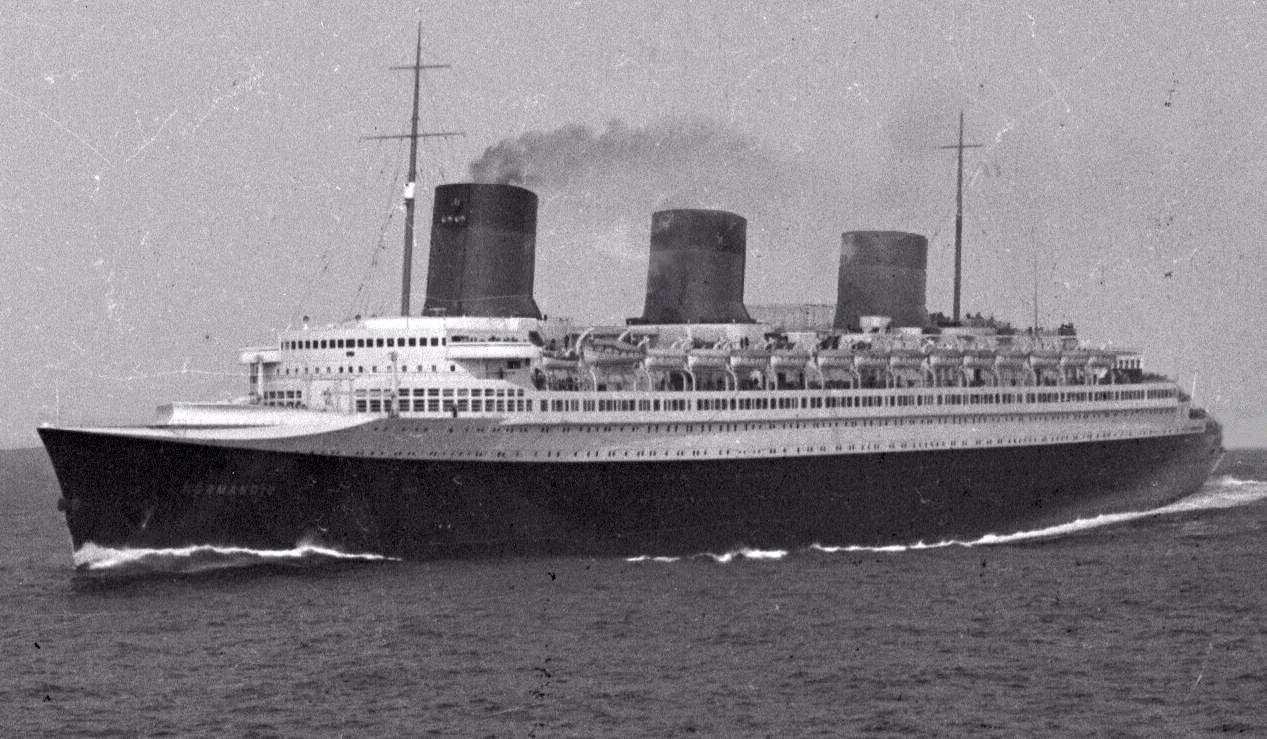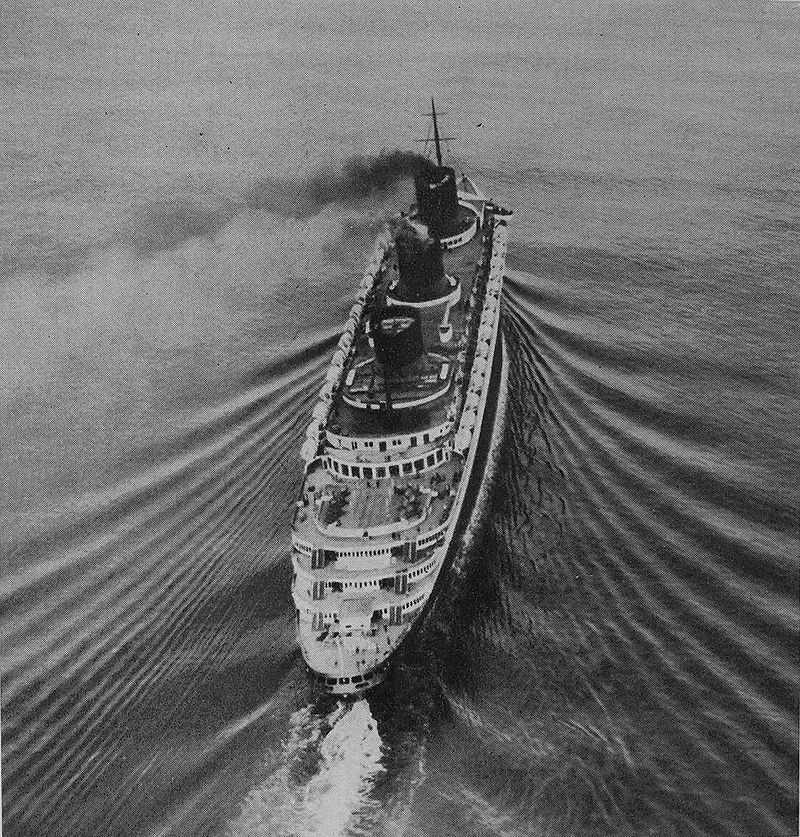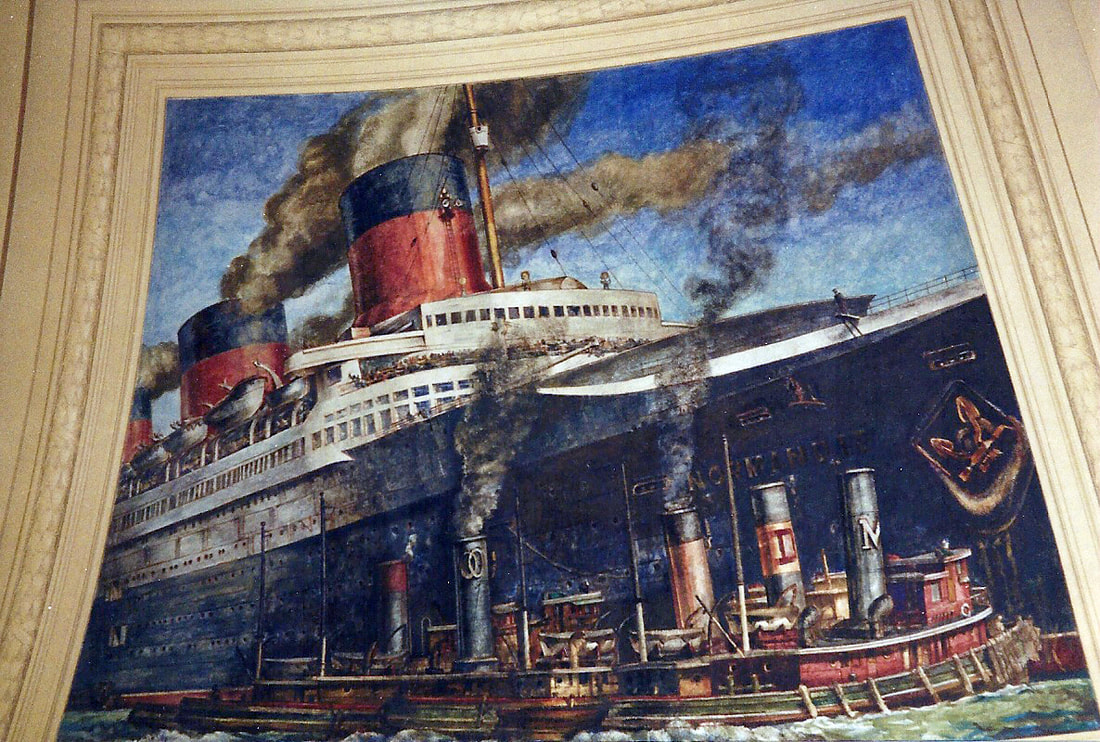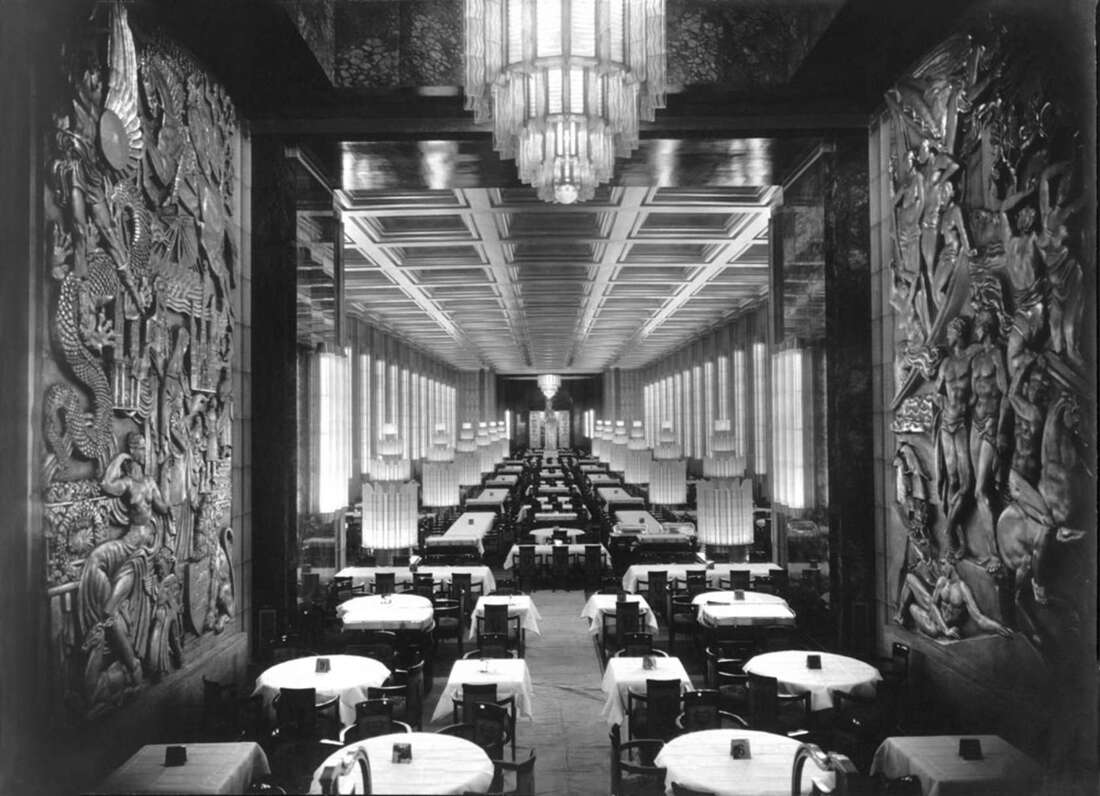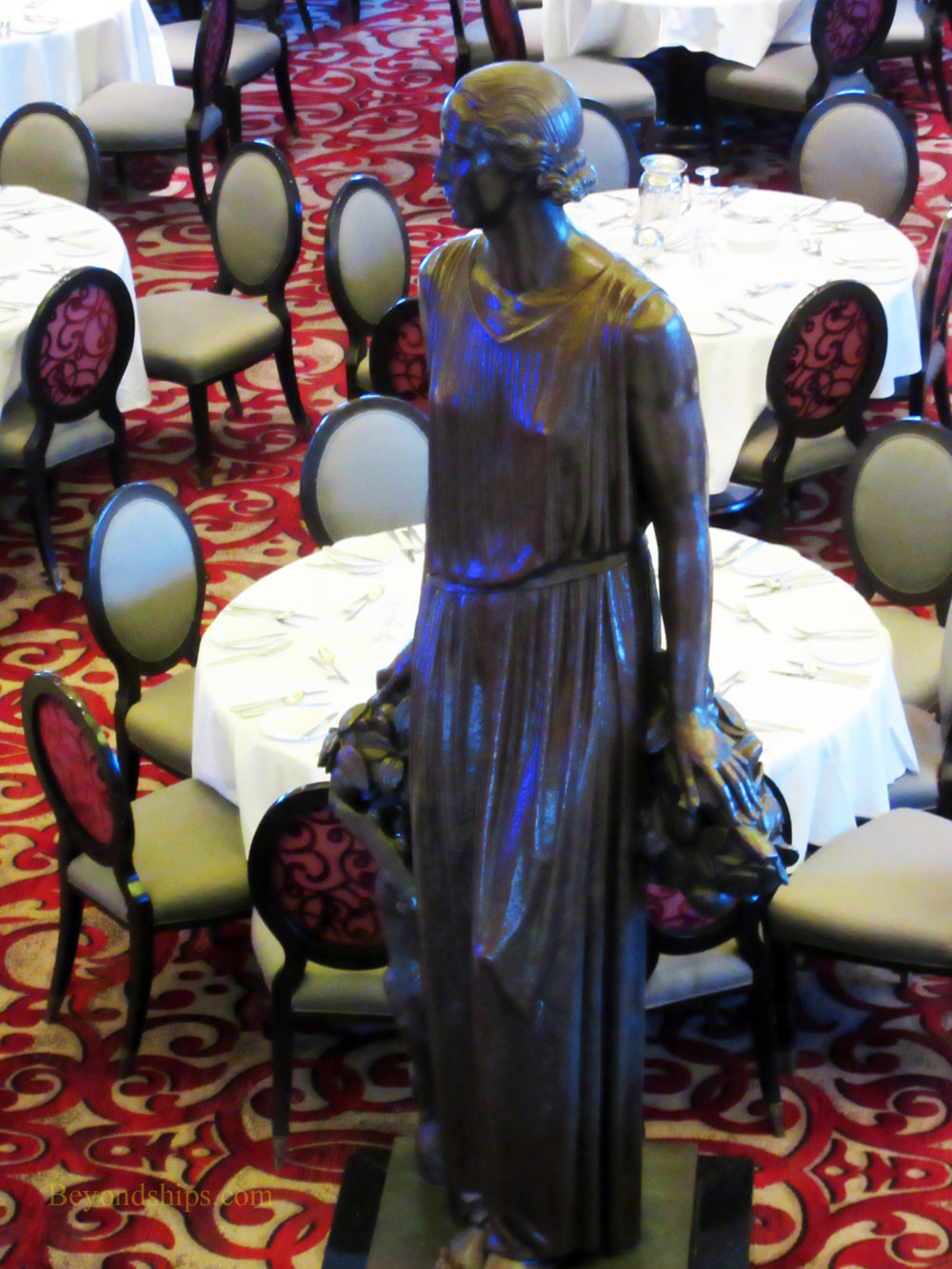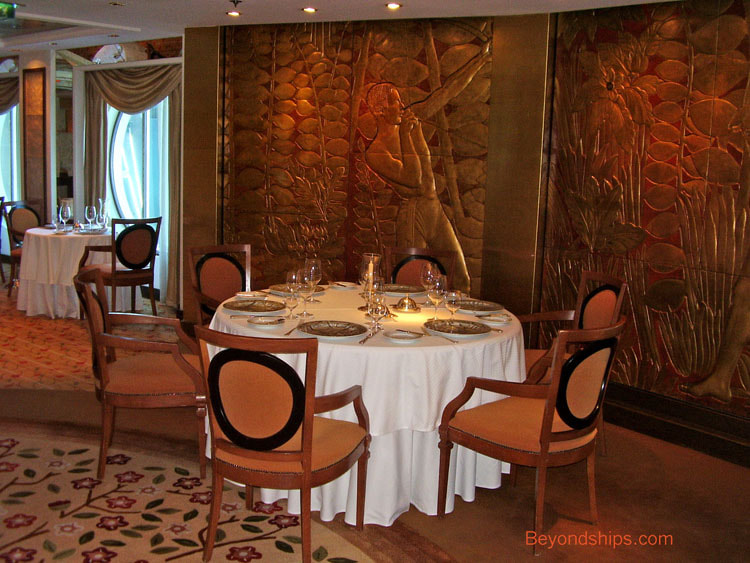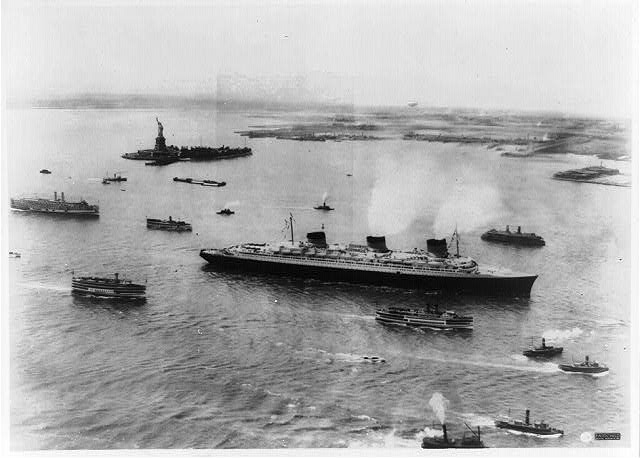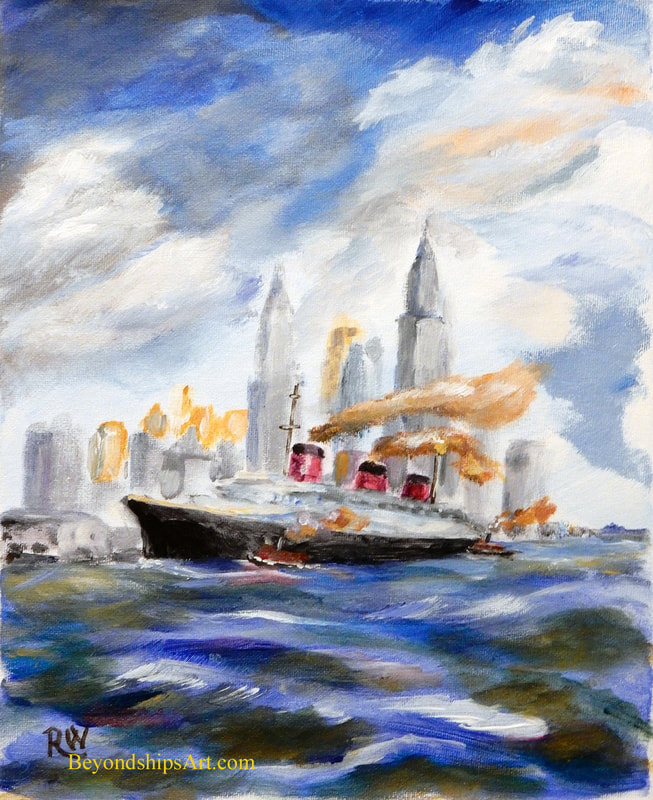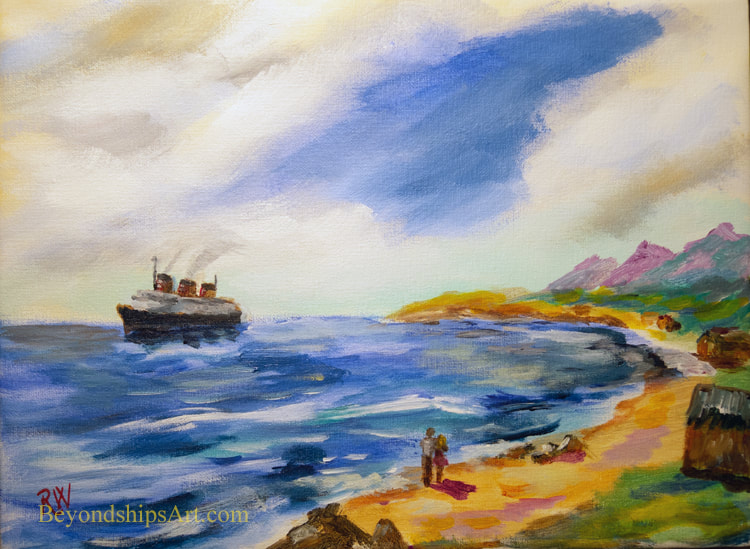Normandie home page
SUMMARYSS Normandie was the first superliner. A technological marvel, she was the first ocean liner to exceed 1,000 feet in length and vied with the Queen Mary for the title of fastest liner. Furthermore, she ws known for her sophistication, elegance and glamour.
Following the end of World War I, the European passenger ship lines had to re-think their fleets. Their pre-war fleets were becoming old and obsolete. In addition, a large part of their revenue had come from ferrying European immigrants across the Atlantic. Changes in U.S, immigration laws after the war severely limited such immigration and so it no longer made sense to devote large areas of a ship to the immigrant trade. A new generation of ocean liners began to emerge. These were seen as the technological marvels of the age and the various nations competed to build the fastest and most glamorous liners. Germany and Italy leaped out in front with record breakers such as the Bremen and the Rex. In Britain, Cunard planned to meet the competition with two 1,000 foot long liners and work was begun on the first of these, which would come to be known as the Queen Mary. The French Line saw the need to respond. It envisioned building its own 1,000 foot liner to be followed at a later date by a second such liner. However, after the stock market crash of 1929, it did not have the money to build the ships. Despite criticism in the press, the French government stepped in and provided loans for the construction of the first ship. It was a matter of national pride. The new ship, to be called “Normandie,” would be superior to other liners in two ways. First, it would be technologically superior. Designed by Russian-emigre Vladimir Yorkevich, Normandie would have an efficient hull that would allow her to achieve high speeds at less cost than other liners. She also incorporated an advanced steam turboelectric power system. Ventilators and deck machinery would be hidden so as to provide more deck space for passengers. She would even be equipped with radar. Second, she would be more luxurious than other liners. Architect Pierre Patout planned interiors based on avant garde art deco and streamlining concepts. Her first class area would be a treasure house of contemporary art. The ship was built at St. Nazaire and entered service in 1935. On her maiden voyage to New York, the French Line denied that the ship was seeking to capture the coveted Blue Ribband for the fastest crossing of the Atlantic. However, when she entered New York harbor, she unfurled a 30 foot long blue pennant and gave each passenger a medallion commemorating their record breaking crossing. An estimated 100,000 people watched her entry into New York. Normandie was met by critical acclaim and was popularly known both for her technological sophistication and her glamour. She was the largest passenger ship in the world, the first to exceed 1,000 feet in length and the first to exceed 60,000 gross tons. However, delayed by the Depression, Queen Mary entered service in 1936 and a fierce rivalry began. Queen Mary was slightly larger in gross tonnage than Normandie and so she became the largest ship in the world. This only lasted briefly as modifications to Normandie increased her gross tonnage over that of her British rival. Normandie would remain the largest ship until Queen Elizabeth entered service in 1940. The Mary was also in the same league as Normandie with regard to speed. She snatched the Blue Ribband from Normandie. However, Normandie soon took it back. The two ships would trade the title back and forth for the remainder of Normandie's career. Queen Mary also proved herself more popular than Normandie. Although the Mary also used art deco styling, it was not as cutting edge as on Normandie. The more conservative approach appealed to more people. In addition, Normandie's business plan focused on first class passengers. Second and third class were given less space and less attention. Cunard had devoted more attention to second and third class and so it attracted more diverse passengers. As a result, Normandie typically sailed a half capacity. Still, the ship was successful enough to cover her operating costs. Although she never repaid her government loans, she was able to operate without a government subsidy most years. This mediocre financial performance as no doubt a reason why her running mate, tentatively named Bretagne, was never built. During her career, Normandie made 139 Atlantic crossings. In 1938, she also cruised to Rio de Janeiro with stops in the Bahamas and the Caribbean. When World War II began, Normandie was in New York. It was decided that it would be safer for her to stay there rather than risk being attacked by airplanes or submarines. After the fall of France, the Vichy government claimed her but the United States did not acknowledge the claim. Consequently, she stayed at her New York pier until the United States entered the war. Seized by the U.S. Government, Normandie was given to the Navy and renamed USS Lafayette in early 1942. During, the process of converting her to a troopship capable of carrying 15,000 soldiers, the ship caught fire and capsized. (See feature article). At the cost of some $5 million, the ship was refloated in late 1943. However, plans to convert her to an aircraft carrier were never fulfilled. She was scrapped in New Jersey in 1946. |
Recognized as an iconic ship even during her short life, Normandie is one of the ocean liners depicted in the rotunda of the U.S. Customs House in Manhattan. Mural by Reginald Marsh.
|
ESSENTIAL STATISTICSTHE BASICS
CLASS: Normandie (unique) BUILDER: Chantiers de L'Atlantique REGISTRY: France ENTERED SERVICE: 1935 LINE: French Line SIZE TONNAGE: 83,423 gross tons LENGTH: 1,028 feet BEAM: 117 feet DRAFT: 37 feet PEOPLE PASSENGERS: 1,972 (848 first class) (670 tourist class) (454 third class) CREW: 1,345 OFFICERS: French TECHNICAL: MAXIMUM SPEED: 32.2 knots SERVICE SPEED: 29 knots POWER PLANT: Steam turboelectric PROPULSION: 4 propellers STABILIZERS: No |
Above and below: Normandie entering New York.
|
FEATURE ARTICLES
|
The End of the Normandie - - Article on the fire that deprived the Allies of Normandie in World War II.
|
Above: Normandie during her call in Martinique.
|
Profile - Historic ship (French Line) - Normandie
